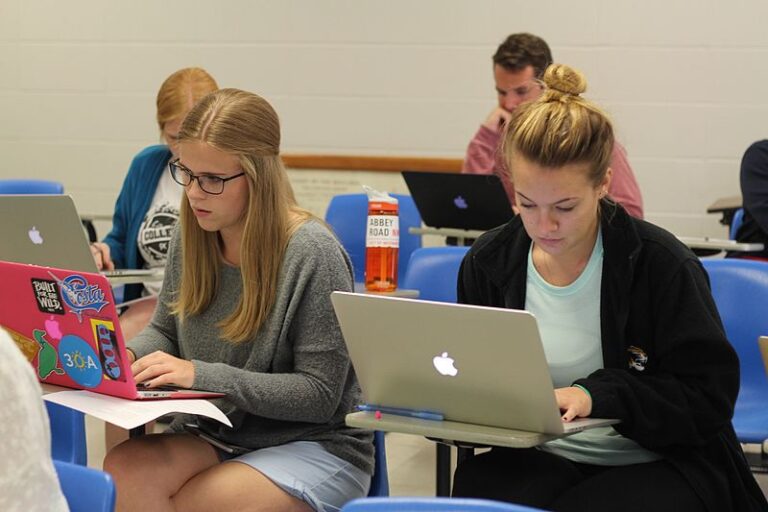Middle school can be a labyrinth of new experiences, academic challenges, and burgeoning independence. In this transitional period, students grapple with a myriad of changes, from physical and emotional to intellectual. Amidst the layers of learning, one unique component of the middle school experience is the advisory class – a relatively novel and potentially puzzling feature for many students and parents entering this stage of education.
In this comprehensive exploration, we’ll dissect the nature of advisory classes in middle school, shedding light on their core functions, the role they play in student development, and how they aim to bridge the gap between academic success and holistic growth.
Understanding the Advisory Framework
At its essence, the advisory class is a platform designed to support students unilaterally – academically, emotionally, and socially. Typically present in middle schools (and sometimes beyond), the advisory period stands apart from regular coursework by providing a dedicated time for students to engage in activities focused on personal growth and community building.
What Happens in Advisory?
During advisory sessions, students can expect a smorgasbord of experiences, ranging from character development programs, academic goal setting, readiness activities for standardized testing, to peer communication workshops, and eveBn organizational skills training. Simultaneously structured and flexible, this period encourages open dialogue, self-reflection, and the cultivation of a supportive atmosphere among peers and mentors.
The Role of the Advisor
A key component of the advisory structure is the adult advisor – often a teacher or staff member who serves as a mentor, guide, and advocate for the students under their wing. Advisors play a crucial role in fostering a safe space for students to share their thoughts and concerns and receive guidance. The advisor-student relationship is pivotal, as it is often more informal and personal than the student’s relationships with their subject teachers.
Building Community and Resilience
One of the primary objectives of advisory classes is to promote a sense of belonging and shared responsibility within the student community. By engaging in team-building exercises, group projects, and discussions that touch on diversity, inclusivity, and respect, students learn the valuable lesson of collective support and resilient problem-solving mechanisms.
The Benefits of an Advisory Program

With a solid frame of reference in place, it’s crucial to examine the tangible advantages that a well-structured advisory program can offer to students.
Academic Goal Setting and Support
By facilitating the setting and tracking of academic goals, advisory classes empower students to take ownership of their learning. This personalized approach to education not only enhances motivation and accountability but also fosters a deeper understanding of the steps required to achieve success.
Social-Emotional Learning (SEL)
The middle school years can be exceptionally tumultuous from a social and emotional standpoint. Whether it’s navigating the waters of friendships, understanding one’s identity, or developing healthy coping mechanisms, the advisory setting addresses the SEL domain comprehensively. It equips students with the tools to manage stress, communicate effectively, and handle the myriad challenges that adolescence presents.
College and Career Readiness
Advisory classes often double as platforms for college and career exploration, especially in the later years of middle school. From learning about high school expectations and courses to exploring various career options, students are provided with invaluable insights and resources for planning their academic trajectory.
Implementing and Improving Advisory Classrooms
A robust advisory program doesn’t form overnight. It is a reflection of proactive pedagogical design, continuous assessment, and a commitment to adaptability.
Tailoring Advisory to Student Needs
Recognizing that each cohort of students is unique, schools often fine-tune their advisory programming to address specific needs and cultural dynamics. Flexibility in the curriculum allows for the integration of new topics or initiatives that resonate with the students’ current circumstances and the evolving landscape of education.
Measuring the Efficacy of Advisory
Schools that have championed advisory courses have also been keen on assessing their impact. Regular surveys, academic performance metrics, and qualitative feedback from students and parents are indispensable tools in gauging the success of an advisory program. Such data not only informs improvements but also highlights the outcomes that matter most to stakeholders.
Professional Development for Advisors
To ensure that advisors are equipped with the skills and knowledge needed to support students effectively, ongoing professional development becomes non-negotiable. Workshops on mentorship, communication strategies, and adolescent psychology provide advisors with the toolkits to excel in their roles.
5 Enlightening Insights about Middle School Advisory Classes
- Advisory is the Heartbeat of Middle School Culture: Far beyond a simple homeroom, the advisory class is where the core values of the school culture are instilled and practiced. It’s a time where the day’s academic rigor is balanced with discussions on ethics, empathy, and community engagement, nurturing a whole-school ethos.
- Enhanced Personalized Learning: Advisors often establish personalized learning plans during advisory, tapping into each student’s unique learning style and interests. This kind of student-centered education tailors the middle school experience to help every learner succeed in their own way.
- A Launchpad for Lifelong Skills: Middle school advisory classes introduce students to essential life skills, such as time management, organization, and critical thinking. These classes often function as a laboratory for real-world skills, which stay with them long after graduation.
- Bulwark Against Bullying: Advisory time allows for regular check-ins and discussions about social issues, including bullying. Through role-play, dialogue, and conflict resolution exercises, students are empowered to create an inclusive environment and stand up for one another.
- Advocacy Training Ground: Middle schoolers learn the power of self-advocacy in advisory classes. By engaging in open conversations with their advisor, students hone the ability to articulate their needs and understand the importance of seeking support when necessary.
What is the purpose of advisory?
The purpose of advisory in middle schools is multifaceted: it is designed to fortify the middle school experience by providing a structured yet nurturing space for students to develop holistically. Advisory classes aim to bridge the gap between the academic and personal realms, ensuring that every student receives individual attention and support. These classes are instrumental in promoting social-emotional learning, fostering a sense of community, guiding students through academic and personal goals, preparing them for future educational and career opportunities, and equipping them with lifelong skills. In essence, advisory acts as a foundational pillar in a student’s educational journey, contributing to a well-rounded and supportive school experience.
What is the meaning of advisory training?
Advisory training refers to the specialized education and professional development opportunities provided to educators that enable them to effectively facilitate advisory classes. Through such training, advisors are equipped with the skills to mentor students, lead sensitive discussions, and manage the dynamics of a diverse classroom. The training typically encompasses areas such as adolescent development, conflict resolution, and cultural competency, and often includes techniques for creating a safe and welcoming environment that promotes open communication. Advisory training ensures that educators are prepared to address the whole child, attending not only to academic guidance but also to social and emotional needs, thus becoming capable advocates for their students’ success.
The Future of Middle School Advisory
In an educational landscape increasingly attuned to the well-being and individual growth of students, the advisory class holds a significant position. As schools continue to innovate and underscore the importance of holistic development, advisory programs will likely evolve to become more robust, responsive, and integral to the middle school curriculum.
By weaving together the threads of academic support, social-emotional learning, and mentorship, the advisory experience stands as a beacon for equipping students with the multifaceted skills that transcend the boundaries of the classroom.
Middle school is a crucial period in shaping the trajectory of a student’s academic and personal development. With the help of thoughtful advisory programs, this phase transitions from a maze of uncertainty to a well-lit path, rich with knowledge, support, and the promise of a self-assured, resilient scholar ready to take on the world.

















+ There are no comments
Add yours